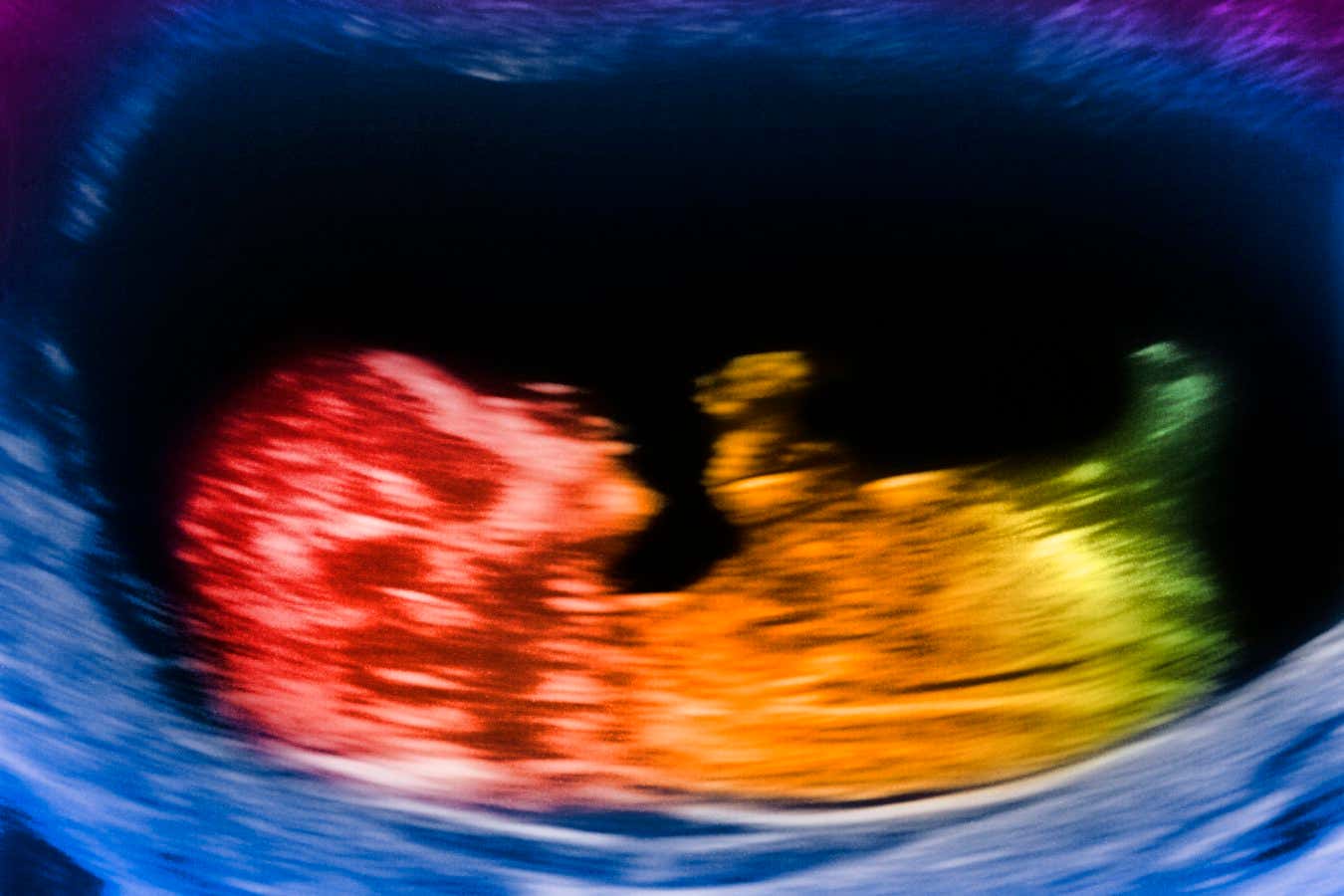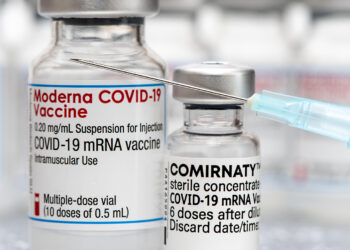
Exposure to hormones in utero could affect human brain growth
Peter Dazeley/Getty Images
The human brain is one of the most complex objects in the universe – and that complexity may be due to a surge of hormones released by the placenta during pregnancy.
While numerous ideas have been proposed to explain human brain evolution, it remains one of our greatest scientific mysteries. One explanation, known as the social brain hypothesis, suggests that our large brains evolved to manage complex social relationships. It posits that navigating large group dynamics requires a certain degree of cognitive ability, pushing social species to develop bigger brains. For instance, other highly sociable animals, such as dolphins and elephants, have relatively large brains too. But the biological mechanism underlying this link has remained unclear.
Now, Alex Tsompanidis at the University of Cambridge and his colleagues say the answer may be placental sex hormones. During pregnancy, the placenta – a temporary organ that acts as an intermediary between the fetus and the mother – produces hormones crucial for fetal development. These include sex hormones such as oestrogens and androgens.
“I know that seems like a jump – thinking about human evolution and then ending up on the placenta,” says Tsompanidis. “But the reason for that is because we’ve been looking at the fluctuations and variations in the levels of these hormones in the womb and seeing that they predict things like language development and social development.”
Emerging research also shows that these hormones influence the developing brain. For instance, a 2022 study found that administering androgens, such as testosterone, to brain organoids – simplified, miniature versions of the brain made from human stem cells – during a critical developmental period increased the number of cells in the cortex, a brain region crucial for memory, learning and thinking. Other studies in brain organoids have shown that oestrogens are important for forming and stabilising connections between neurons.
There is also some limited evidence that humans are exposed to higher levels of these hormones during pregnancy than non-human primates are. A 1983 study found that gorillas and chimpanzees have four to five times less oestrogen in their urine than humans during pregnancy. The placenta also has more activity in genes that produce aromatase – an enzyme that converts androgens into oestrogens – in humans than in macaque monkeys.
“These hormones have become very important for brain development, and if we look at it comparatively with other primates and other species, there seems to be evidence that these hormones are very high in humans [during pregnancy],” says Tsompanidis.
This influx could also help explain why humans form such large social groups. Some evolutionary biologists believe that we are able to build extensive social networks because the differences between the sexes are more subtle in humans than in other primates. For example, men and women are more similar in body size than male and female Neanderthals, says Tsompanidis. This is probably due to higher oestrogen levels in utero, he says.
“If you have a lot of oestrogen, not only are you a bit less masculinised, but you’re also more likely to have an interconnected brain,” says Tsompanidis. “So the push to increase oestrogen, the push to make everyone social and getting along, is actually what makes the human brain larger and more connected.”
“I agree that placental genes influence human brain development and likely hominin brain evolution,” says David Geary at the University of Missouri. “However, I think they are underestimating the influence of male-male competition on brain and cognitive evolution.”
While it is true that male humans within the same social group tend to be more cooperative and less aggressive towards one another than is seen in other primates, this may have evolved as a result of between-group conflicts, he says. After all, greater coordination and teamwork would be an advantage in a deadly confrontation, he points out.
Our knowledge of placental differences between primates is also limited. Many non-human primates, such as chimpanzees, eat the placenta after giving birth, making it difficult to study, says Tsompanidis.
Identifying which factors shaped human brain evolution is more than just an intellectual pursuit: it could also shed light on neurodiversity.
“Not all humans are social or have incredible language skills – and that is fine. That doesn’t make them any less human,” says Tsompanidis. Understanding how the brain evolved could provide insight on whether certain cognitive traits come with trade-offs, he says.
Topics:
Source link : https://www.newscientist.com/article/2484993-our-big-brains-may-have-evolved-because-of-placental-sex-hormones/?utm_campaign=RSS%7CNSNS&utm_source=NSNS&utm_medium=RSS&utm_content=home
Author :
Publish date : 2025-06-20 00:01:00
Copyright for syndicated content belongs to the linked Source.














